Back to Homepage / Blogs / Jun 2024
Ha Long - The Descending Dragon
Ha Long Bay, located in the northeastern part of Vietnam, is a UNESCO World Heritage Site renowned for its stunning natural beauty and unique geological features. The bay encompasses an area of about 1,553 square kilometers and is known for its thousands of limestone karsts and islets that rise dramatically from the emerald waters of the Gulf of Tonkin.
The geological history of Ha Long Bay dates back over 500 million years, when the region was submerged under the sea. The bay's landscape began to take shape during the Ordovician and Silurian periods, as the earth's crust underwent tectonic movements, resulting in the formation of limestone formations. Over time, the combination of erosion, weathering, and the dissolution of the limestone by acidic rainwater contributed to the creation of the spectacular karst topography seen today.
Ha Long Bay has a rich cultural history, with evidence of ancient human habitation dating back to prehistoric times. Archaeological findings suggest that early communities lived in the area during the Ha Long culture (around 18,000 – 7000 BCE). The bay has served as a crucial maritime route throughout Vietnam's history, playing a significant role in trade and defense.
Legend and folklore also play a role in the history of Ha Long Bay. According to local legend, Ha Long Bay was formed when dragons descended from the heavens. The name "Ha Long" itself translates to "Descending Dragon."
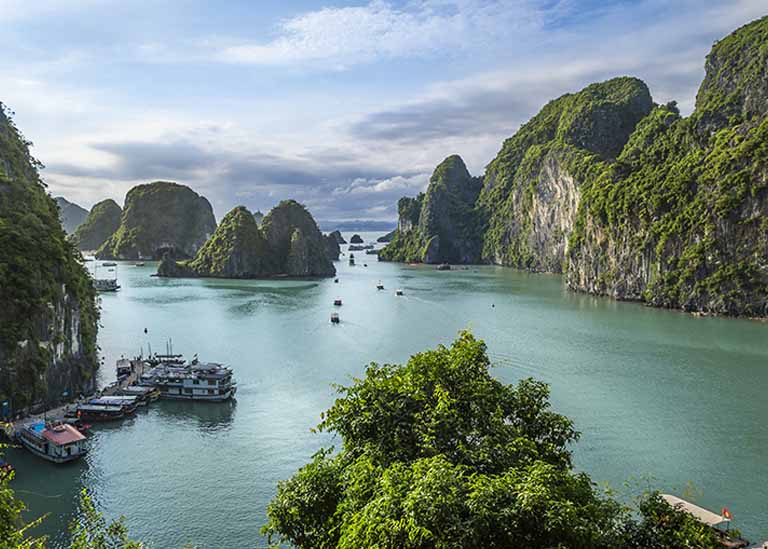
UNESCO World Heritage Site
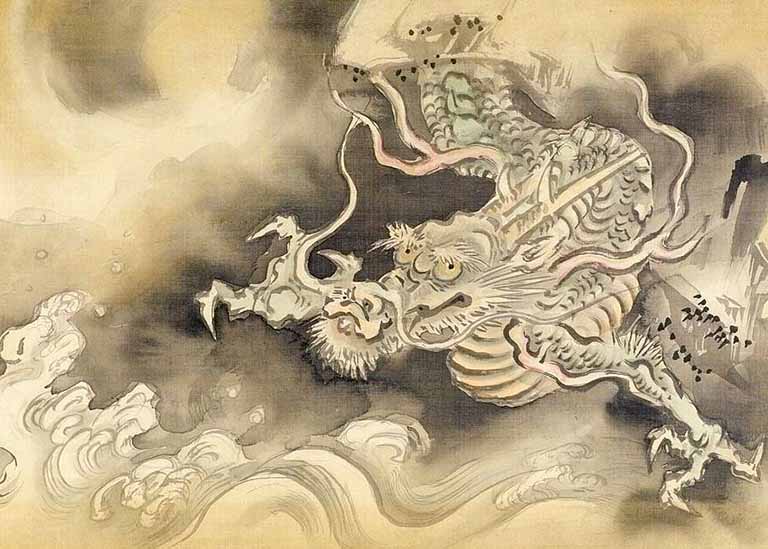
The Descending Dragon
The Legend of the Descending Dragon
To truly understand Ha Long's significance, one must delve into the legend that has been passed down through generations. According to Vietnamese folklore, the bay owes its creation to dragons sent by the heavens to defend the country against invaders. When the country of Vietnam was formed, it had to fight off invaders attempting to enter the country through the sea. That's when the Jade Emperor prayed to the Gods to send the Mother Dragon and her children to help the people of Vietnam.
As the dragons soared through the skies, they spat out jewels and jade to defeat the invaders. Legend says that these were actually the teeth of the dragons. The dragons used their magic to create rock mountains in the sea, causing the invaders' ships to crash. The jewels and jade spat out by the dragons transformed into the numerous karst limestone islets that now dot the emerald waters of Ha Long Bay.
After winning the battle, the dragons decided to make Ha Long Bay their home. The place where the mother dragon descended was named Ha Long, which translates to "Descending Dragon." The spot where the dragon's children took care of their mother became Bai Tu Long Island. The area where the dragon's children playfully swirled their tails was called Bach Long Vi island, which is now the Tra Co peninsula in Mong Cai.
This mythical tale not only adds a touch of magic to the landscape but also reflects the cultural importance of dragons in Vietnamese history.

Bai Tu Long Island
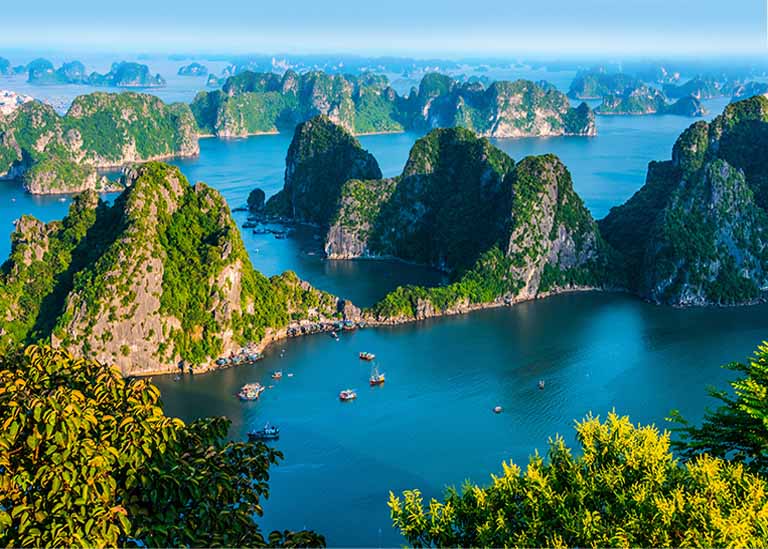
Dragons descended from the heavens
Historical Significance
While the legend of the descending dragon provides a captivating narrative, Ha Long's history extends beyond the realm of mythology. Archaeological findings suggest that ancient Vietnamese people inhabited the area around Ha Long Bay as far back as the prehistoric era.
In ancient times, around 16,000–5000 BC, people lived in the Ha Long and Bai Tu Long areas. They were part of the Soi Nhu culture, which involved fishing, collecting fruits, and digging for bulbs and roots. Unlike other Vietnamese cultures, they lived in coastal areas.
Around 5000–3000 BC, the Cai Beo culture emerged in Ha Long and Cat Ba island. People here focused on sea exploitation, forming a connection between the Soi Nhu and Ha Long cultures.
The Ha Long culture thrived from 2500 to 1500 BC. This period saw historical naval battles in Ha Long Bay against Vietnam's coastal neighbors. General Tran Hung Ðao played a significant role in stopping Chinese invaders by strategically placing obstacles in the Bach Ðang River.
During the feudal period, Ha Long Bay played a strategic role in Vietnam's defense against external threats. The bay's labyrinthine structure and hidden coves made it an ideal location for ambushes and surprise attacks, contributing to its significance in military strategies. The bay also served as a crucial trading route, connecting local communities to neighboring regions, even as far as China.
On June 5, 1948, Ha Long Bay witnessed the raising of the new national flag of the Provisional Central Government of Vietnam during the signing of the Ha Long Bay Agreements. This event marked an important moment in Vietnamese history.
During the Vietnam War, the United States Navy heavily mined the channels between the islands, posing threats to shipping routes that persist to this day.
The bay's historical significance spans from ancient cultures to modern conflicts, making it a truly storied and resilient part of Vietnam's past. As the centuries passed, Ha Long continued to evolve, becoming a bustling hub for trade, fishing, and maritime activities. The bay witnessed the rise and fall of various dynasties, each leaving its mark on the surrounding landscape.
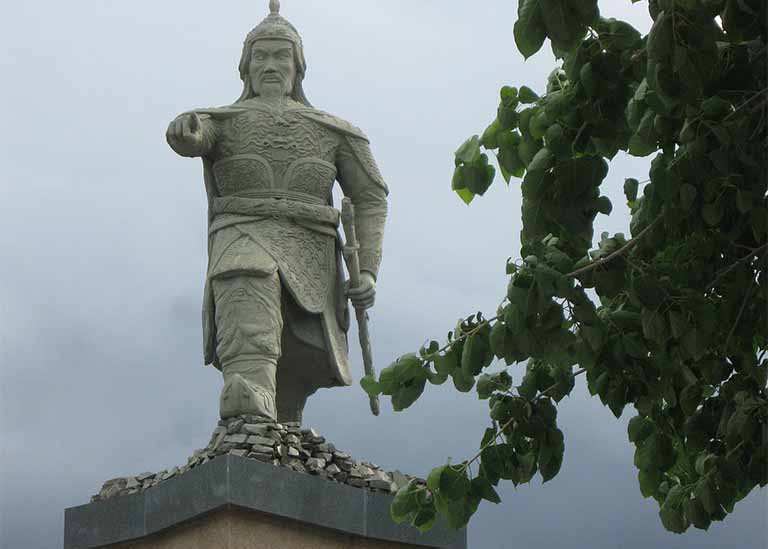
General Tran Hung dao
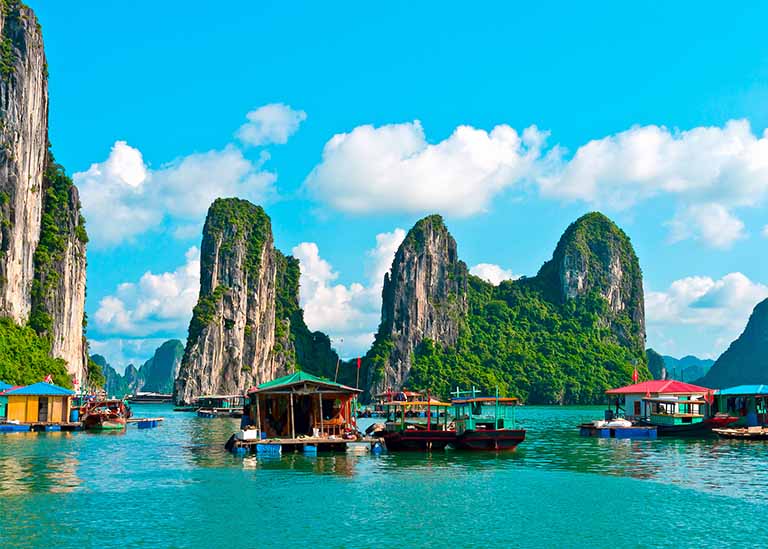
Cai Beo Floating Village
Etymology of Ha Long
The name "Ha Long" itself carries linguistic and cultural nuances that deepen our understanding of this mystical destination. In the Vietnamese language, "Ha" means "descending," and "Long" translates to "dragon." This nomenclature not only echoes the legendary tale of the descending dragon but also underscores the cultural symbolism attached to dragons in Vietnamese folklore.
The name "Ha Long Bay" wasn't prevalent in ancient Vietnamese literature before the 19th century. Instead, the bay was known by various names, such as Giao Chau, Luc Thuy, An Bang, An Quang, Hai Dong, Hoa Phong, Nghieu Phong, and others.
The modern name gained prominence in the late 19th century when it appeared on the French maritime map of the Gulf of Tonkin and in certain French and Vietnamese newspapers.
The origin of the name "Ha Long Bay" is associated with an intriguing encounter documented by Lieutenant Lagrédin and his crew on the French warship "Avalanse" in 1898. According to a French newspaper article, they reported sighting giant sea snakes in the bay. The appearance of these creatures, resembling dragons in Asian mythology, inspired the naming of the area as Halong Bay.
The etymology of Ha Long also sheds light on the linguistic diversity present in Vietnam. The Vietnamese language is rich in tonal variations, and the pronunciation of words can change their meaning entirely. In the case of Ha Long, the subtle nuances in tonal pronunciation emphasize the connection between the mythical dragon and the bay.

Battle of Dien Bien Phu in 1954

Trade, Fishing, and Maritime Activities
Colonial Influences
The 19th and 20th centuries brought significant changes to Vietnam, as the country became a French colony. The French colonial period had a profound impact on the cultural and economic landscape of the region, including Ha Long Bay. European explorers and colonial administrators marveled at the bay's natural beauty, with many recording their impressions in travelogues and paintings.
The French influence in Vietnam began in the mid-19th century when French explorers and missionaries arrived. The French colonial administration gradually expanded its control over Vietnam, leading to the establishment of French Indochina, which included Vietnam, Laos, and Cambodia.
The French valued Ha Long Bay for its strategic maritime location and natural resources. The bay became an important shipping route and a crucial area for coal mining and extraction.
During the colonial period, French authorities initiated some infrastructure development in and around Ha Long Bay. This included the construction of ports and facilities to facilitate the extraction and transportation of coal, which was a valuable resource for the French colonial economy. The bay's strategic importance was recognized not only for its economic potential but also for its role in naval activities.
The French influence on Ha Long Bay was primarily economic and strategic rather than leading to significant cultural or social changes in the local communities. The people living around Ha Long Bay continued their traditional ways of life, relying on fishing and agriculture, despite the economic activities introduced by the French.
After World War II and the defeat of the French at the Battle of Dien Bien Phu in 1954, Vietnam gained independence from colonial rule. The subsequent division of Vietnam into North and South resulted in the Vietnam War, with Ha Long Bay situated in North Vietnam. The bay and its surroundings became a strategic area during the conflict, and it suffered from bombing and other military activities.
Following the reunification of Vietnam in 1975, efforts were made to rebuild and develop the country. Ha Long Bay gradually emerged as a popular tourist destination, showcasing its natural beauty and cultural heritage. Today, the influence of French colonialism is seen more in broader aspects of Vietnamese culture, such as architecture, cuisine, and language, rather than specifically in the development of Ha Long Bay. The bay remains a symbol of Vietnam's rich history and natural wonders, attracting visitors from around the world.
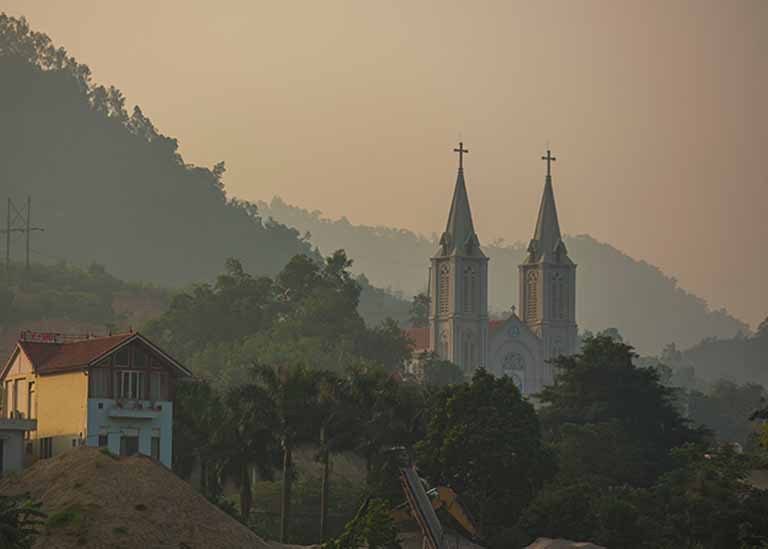
French colonial period
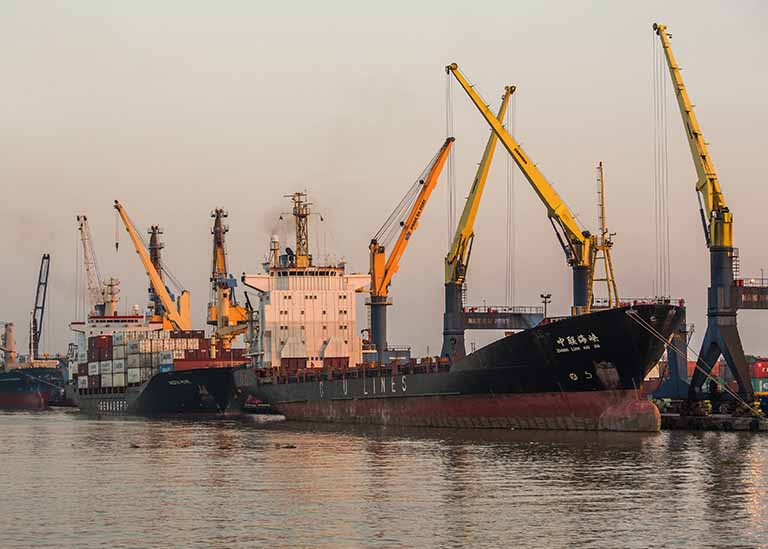
Shipping Route
Recognition as a UNESCO World Heritage Site
In 1994, Ha Long Bay was designated a UNESCO World Heritage Site, a testament to its outstanding cultural and natural value. The UNESCO recognition acknowledged Ha Long as a site of universal importance, not only for its breathtaking scenery but also for its historical and cultural significance.
Designation as a UNESCO World Heritage Site significantly boosted tourism in the region, attracting visitors from around the globe. The economic benefits derived from tourism helped underscore the importance of preserving the bay's natural beauty and cultural heritage for the long term.
Since receiving UNESCO status, Ha Long Bay has continued to be a symbol of Vietnam's natural wonders and cultural heritage. Efforts are ongoing to balance tourism with conservation, ensuring that the bay remains a sustainable and preserved destination for future generations to enjoy. The recognition as a UNESCO World Heritage Site has played a vital role in raising awareness about Ha Long Bay's significance and the importance of safeguarding this unique and majestic natural environment.